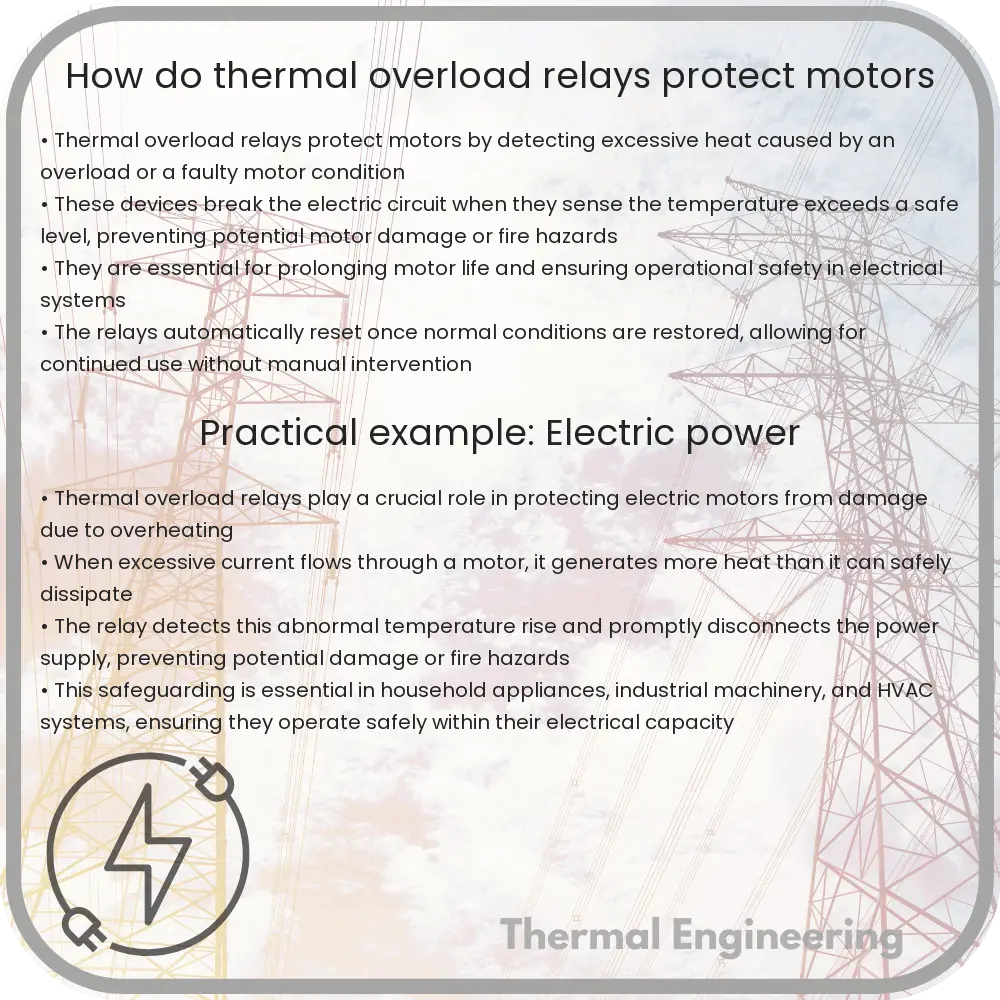Learn about thermal overload relays, their protective role in electric motor safety, functions, key components, settings, and diverse industry applications.

Understanding Thermal Overload Relays and Their Role in Motor Protection
Thermal overload relays are crucial components in the protection of electric motors. They ensure that motors operate within safe thermal limits, preventing damage due to overheating caused by excessive current. This article will explain how thermal overload relays function, why they are necessary, and their applications in safeguarding motors.
What is a Thermal Overload Relay?
A thermal overload relay is an electromechanical protection device for electric motors. It is designed to monitor and respond to the heat generated by excessive current flowing through the motor. The primary purpose of a thermal overload relay is to prevent thermal damage to the motor that can occur from operations such as overloads, stall, or phase failure.
How Do Thermal Overload Relays Work?
The operation of a thermal overload relay is based on the principle of thermal effect produced by electric current. The device typically contains a bimetallic strip that heats up and bends when exposed to high current for an extended period. The bending of the strip eventually leads to the triggering of a tripping mechanism, which interrupts the power supply to the motor, thereby providing protection against overheating and potential damage.
- Bimetallic Strip: Composed of two different metals with different coefficients of thermal expansion bonded together. As current passes through the relay, the heat generated causes the metals to expand at different rates, resulting in bending.
- Tripping Mechanism: When the bending reaches a critical level, it activates the tripping mechanism which opens the electrical circuit and stops the current flow to the motor.
- Automatic or Manual Reset: Some thermal overload relays offer an automatic reset function, while others require a manual reset after tripping. The choice depends on the specific application and safety concerns.
Why Are Thermal Overload Relays Important?
Protection against overheating is not just a matter of extending the lifespan of a motor. Overheating can lead to insulation damage, which increases the risk of electrical fires. Furthermore, a motor experiencing thermal overload is likely to operate inefficiently, increasing energy consumption and operating costs. Therefore, thermal overload relays are essential for both safety and efficiency in industrial and commercial motor applications.
Settings and Adjustments
For effective protection, thermal overload relays must be properly configured. This configuration involves setting the relay to the motor’s expected current level:
- Current Setting: This setting should match or be slightly above the motor’s normal operating current. It ensures that the relay allows normal operation but trips under abnormal conditions.
- Time Setting: Since some applications may result in temporary peaks in current, time delays can be set to avoid unnecessary tripping. These settings ensure that only sustained overcurrent conditions will lead to tripping.
Applications of Thermal Overload Relays
Thermal overload relays are widely used in various industries wherever electric motors are employed. They are found in:
- Manufacturing equipment
- HVAC systems
- Pumping systems
- Agricultural machinery
- Material handling systems
In conclusion, thermal overload relays are vital components in motor control systems, providing essential protection against potential damage from overheating. By understanding how these devices operate and ensuring they are correctly configured, businesses can improve the safety, efficiency, and reliability of their motor-driven applications.